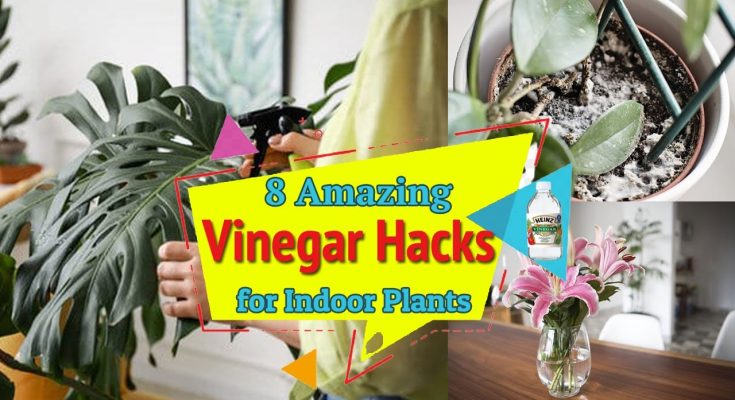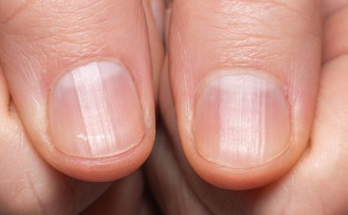
Vinegar is no less than sorcery when it comes to plants in the garden, but here are some valuable Vinegar Hacks specifically for Indoor Plants that you can use without any worries, as it is a completely safe, natural product!
Vinegar Hacks for Indoor Plants
1. Clean Clay Pots

Clay pot, while looking attractive, absorbs minerals, calcium, and salts from fertilizers and water, and all this clogs its natural porous ability over time. You can use vinegar to bring back the original look and unclog the tiny pores.
Soak the pots in a vinegar solution, which can be one part vinegar with four parts water (1 cup of 5 percent white vinegar in 3-4 cups water) for 30-60 minutes. After cleaning your pots, don’t forget to rinse them with plain water to remove any vinegar residue!
2. Promotes Germination

You can use vinegar to soften the outer shell of the hard-coated seeds like beans, peas, melons, and morning glories. Doing this will remove a hard membrane that can interrupt the germination process.
Soak the seeds overnight in a water bowl with 5-8 drops of white vinegar to ease germination.
This will help the seeds to germinate faster while improving the chances considerably. Learn more about this in detail here! This process can also be used before germinating the seeds in paper towels.
3. Controls Powdery Mildew

The acetic acid present in vinegar is great for controlling powdery mildew. Add one to two tablespoons of vinegar in a gallon of water, shake, and spray on the affected area of the plant.
Note: Always test it first on a small plant part for 24 hours to see if vinegar is damaging the leaf before applying it to the entire plant. Also, 24 hours after the application, wipe the leaves again with plain water!
4. Amends Soil pH

Mix one teaspoon of white vinegar in one liter of water and pour it into the pot. Water the plant with this solution. It will quickly benefit acid-loving plants like ferns, African violets, rubber plants, and gardenia. However, this is not a long-term solution; you can do it a few times every 4-6 weeks. For lasting results and acidic soil, use Sulfur!
Caveat: Overdoing it will kill your plants.
5. Clean Houseplants

The foliage of your indoor plants accumulates dirt over time. Many houseplants also get white spots on the foliage due to hard water high in mineral content. You can get rid of these stains or dust by making a mixture of:
- 1 to 2 tablespoons of White Vinegar
- 4-5 Cups of Water
- A Couple of Drops of Dish Soap (Optional)
- Soft Cotton Cloth
- Large Bowl
- Spray Bottle
Make a solution using all the ingredients in a large bowl. Add dish soap only if you want to remove a sticky residue or if there is a pest problem.
Note:
- After trying this hack, avoid placing the plants in the direct hot sun as it may burn the leaves.
- This trick will also help in reducing pest and disease problems.
- After wiping off with vinegar solution, wipe your foliage again with plain water.
6. Removes White Lines from the Glass/Vase

While keeping cut flowers or growing plants like monstera or lucky bamboo in vases, the hard water often results in visible white lines due to mineral deposits.
You can get rid of them easily by dipping a piece of cloth in vinegar–rubbing on the mark and leaving it for 10 minutes before wiping it off.
7. Helps Indoor Flowers Last Longer

Add two tablespoons of white vinegar along with one teaspoon of sugar to a gallon of water. Use this solution to keep cut flowers, but change it every three days. It will help them last longer!
8. Keeps Curious Pets Away

Pets can cause a lot of trouble to indoor plants. Vinegar can come to your rescue, as dogs and cats both dislike its smell.
Simply wet some old pieces of cloth in vinegar and hang them near the pot, re-soak them once in a while for best results.

